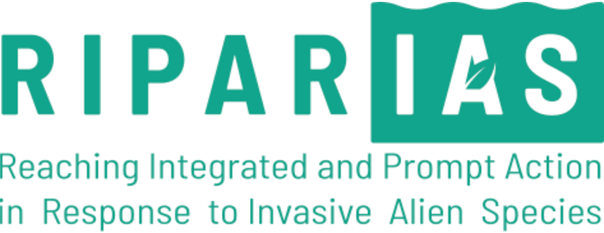RIPARIAS - Reaching Integrated and Prompt Action in Response to Invasive Alien Species
Details
RIPARIAS develops an innovative evidence-based workflow for decision making on IAS management, translating national management objectives to concrete actions by maximising cost efficiency of management, piloted in Dijle, Mark and Zenne river sub-basins of the Scheldt river basin district. The project aims to:I. Improve data flows from existing early warning and surveillance systems (kept separately by regions, local authorities and NGOs) to regional IAS managers by ensuring interoperability and enhancing surveillance at pilot locations. Ten taxa of emerging aquatic and riparian species listed under the EUregulation are targeted (for plants: Cabomba caroliniana, Heracleum persicum, H. sosnowskyi, Lagarosiphon major, Ludwigia peploides, Lysichiton americanus, Myriophyllum heterophyllum; for crayfishes: Orconectes virilis and Procambarus clarkii, P. fallax and additional taxa not yet on the EU-list.
II. Develop clear guidelines and objective criteria for prioritising management actions for aquatic and riparian IAS and apply priority actions in pilot river sub-basins Dijle (128 404 ha), Mark (17 865 ha) and Zenne (116 834 ha):
A. For emerging species (see I), the objective is early detection and rapid eradication with a focus on introduction pathways identified in the Belgian pathways analysis, aiming for 100% increase in IAS detection and eradication of 15 species at the pilot sites.
B. For widespread species, two distinct management objectives are foreseen depending on species distribution: 1) containment of populations in core areas (for 4x 1 species within 1 river sub-basin); 2) maintenance of pest free areas such as upstream part of river basins and protected areas (for 4x 1 species within 1 river sub-basin). The widespread species targeted are for plants: Elodea nuttallii, Heracleum mantegazzianum, Hydrocotyle ranunculoides, Ludwigia grandiflora, Impatiens glandulifera, Myriophyllum aquaticum; for crayfishes: Orconectes limosus, Pacifastacus leniusculus.
III. Improve data flows from management actions to policy-makers by monitoring and assessing IAS management efficiency (on the target species listed) in support of the reporting obligation pursuant to EU Regulation Art. 24
IV. Promote the replication of the evidence-based workflow for IAS management decision making in Europe, thus contributing to the EU-wide implementation of EU Regulation No. 1143/2014 and Biodiversity Strategy target 5 and improve transfer of experience and best IAS management practices.
| Status | Running |
|---|---|
| Actual start/end date | 01/01/2021 - 01/09/2026 |
Teams
- Open science lab for biodiversity
- Wildlife Management and Invasive Species
- Own Capital INBO
- Management Team
INBO Research theme(s)
- Invasive species
- Water
- Data & infrastructure
Participants
Tim AdriaensPeter Desmet
Bram D'hondt
Damiano Oldoni
Lien Reyserhove
Jasmijn Hillaert
Sander Devisscher
Nicolas Noé
Rani Van Asbroeck
Pieter Huybrechts
Soria Delva
Diederik Strubbe
Sanne Govaert

